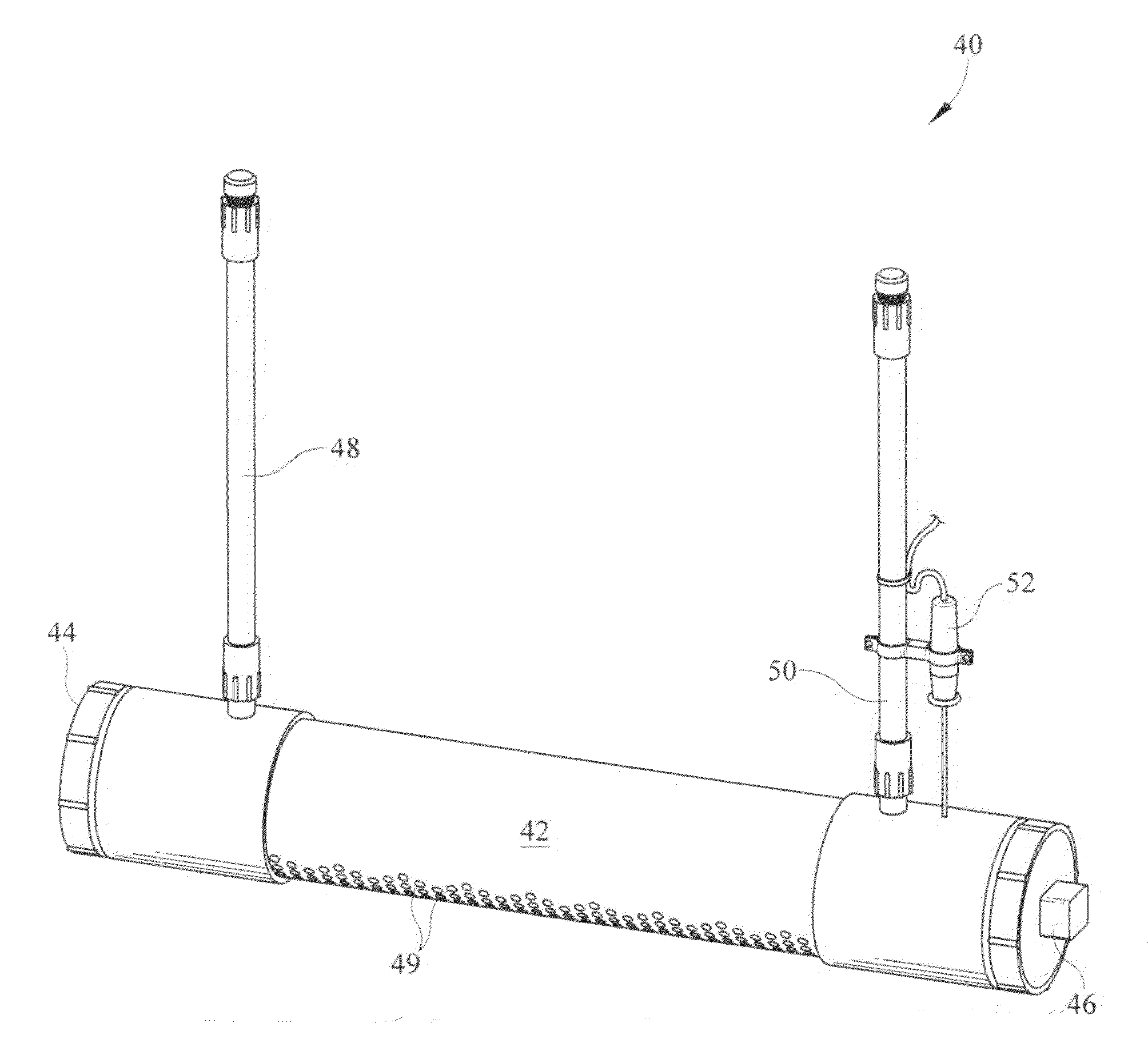Soil treatments with greenhouse gas
- Summary
- Abstract
- Description
- Claims
- Application Information
AI Technical Summary
Benefits of technology
Problems solved by technology
Method used
Image
Examples
Embodiment Construction
[0025]With reference to FIGS. 1-4, the method for facilitating reduction in greenhouse gas emissions through the application of greenhouse gas in combination with a surfactant to soil is shown and described.
[0026]In one embodiment of the invention, stack gas, including one or more GHG, is combined with a surfactant. This combination is then applied to soil by subsurface injection. At least a portion of any carbon dioxide in the stack gas is uptaken by plants in the soil. The remaining GHGs in the stack gas remain in the soil for a period of time. The stack gas are generally acidic and may negatively effect plant growth by lowering the soil pH. A basic surfactant is used, which buffers the acidity of the stack gas and can render the combination neutral in the soil. The uptake of any carbon dioxide in the stack gas at the level of plant roots will enhance plant growth.
[0027]Greenhouse gas is made available at the site of sequestration. The GHG may be pure or a component of a mixture o...
PUM
 Login to View More
Login to View More Abstract
Description
Claims
Application Information
 Login to View More
Login to View More - R&D
- Intellectual Property
- Life Sciences
- Materials
- Tech Scout
- Unparalleled Data Quality
- Higher Quality Content
- 60% Fewer Hallucinations
Browse by: Latest US Patents, China's latest patents, Technical Efficacy Thesaurus, Application Domain, Technology Topic, Popular Technical Reports.
© 2025 PatSnap. All rights reserved.Legal|Privacy policy|Modern Slavery Act Transparency Statement|Sitemap|About US| Contact US: help@patsnap.com



